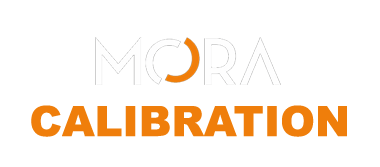No products in the cart.

In industries where precision is paramount, calibration instruments are the unsung heroes that ensure measurement accuracy and consistency. Calibration is the process of verifying and adjusting the accuracy of measurement instruments, ensuring they produce results within the specified tolerances. From pressure gauges to temperature sensors, calibration instruments are essential for maintaining quality, safety, and compliance across various sectors. The evolution of calibration technology has transformed how industries manage their equipment, making calibration more efficient and reliable than ever before.
The Critical Role of Calibration in Industry
Calibration is not just a regulatory requirement; it’s a fundamental aspect of maintaining product quality and safety. Accurate measurements are essential in industries such as pharmaceuticals, aerospace, automotive, and manufacturing, where even the smallest deviation can lead to significant consequences. For example, in the pharmaceutical industry, precise measurements are critical for ensuring that drug dosages are accurate. Any variation can result in ineffective or potentially harmful products.
Regular calibration of measurement instruments ensures that they continue to function correctly and provide accurate readings. Without calibration, instruments may drift over time, leading to inaccurate measurements and potentially costly errors. Calibration also helps extend the lifespan of equipment, as it identifies issues before they lead to significant failures.
Advancements in Calibration Technology
The advent of digital technology has revolutionized the calibration process. Modern calibration instruments offer automated procedures, reducing the need for manual intervention and minimizing the risk of human error. Automated calibration systems can handle multiple instruments simultaneously, significantly improving efficiency and throughput.
Additionally, the integration of software with calibration instruments allows for real-time data analysis and reporting. Calibration data can be stored, tracked, and analyzed over time, providing valuable insights into the performance and reliability of measurement instruments. This data-driven approach enables predictive maintenance, allowing industries to address potential issues before they impact operations.
Portable calibration instruments have also gained popularity, enabling technicians to perform on-site calibrations without the need to send equipment to a lab. This reduces downtime and ensures that instruments remain in optimal condition, even in remote or challenging environments.
Applications Across Various Industries
Calibration instruments are used across a wide range of industries, each with its unique requirements. In the aerospace industry, for example, the accuracy of measurement instruments is critical for ensuring the safety and performance of aircraft. Pressure, temperature, and torque sensors must be calibrated regularly to ensure they provide accurate readings.
In the energy sector, calibration is essential for maintaining the efficiency and safety of power generation and distribution systems. Instruments used to monitor voltage, current, and frequency must be calibrated to ensure they provide reliable data, which is crucial for managing grid stability and preventing blackouts.
The food and beverage industry also relies heavily on calibration to ensure product quality and safety. Temperature sensors, pH meters, and flow meters must be calibrated to ensure they provide accurate readings, which is critical for maintaining product consistency and complying with regulatory requirements.
The Future of Calibration Instruments
The future of calibration technology is likely to be shaped by advancements in artificial intelligence (AI) and the Internet of Things (IoT). AI-powered calibration systems can analyze vast amounts of data and identify patterns that may indicate potential issues. This allows for predictive maintenance and ensures that instruments remain accurate and reliable over time.
The IoT is also expected to play a significant role in the future of calibration. Connected calibration instruments can communicate with other devices, providing real-time data and enabling remote calibration. This is particularly important in industries where downtime is costly, as it allows for continuous monitoring and calibration without interrupting operations.
Conclusion
Calibration instruments are the backbone of precision and accuracy in industries where measurement is critical. The advancements in calibration technology have made the process more efficient, reliable, and data-driven, enabling industries to maintain the highest standards of quality and safety. As technology continues to evolve, calibration instruments will play an increasingly important role in ensuring that industries can meet the demands of a rapidly changing world.
-
$1,300.00
$1,443.00 -
$1,320.00
$1,461.00 -
$1,437.00
-
$1,437.00
-
$1,437.00
-
$1,433.00
